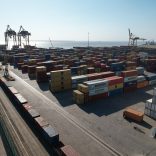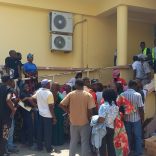Mozambique: 'Guias de Trânsito' to reduce road deaths - report
SADC industrialisation strategy important for development of value-chains in region

Regional industrialisation will require a strong Southern African Development Community (SADC) Free Trade Area (FTA), Department of International Relations and Cooperation DG Kgabo Mahoai said on Monday.
Speaking at the SADC Industrialisation Week, in Johannesburg, he said the
FTA would facilitate increased export diversification, greater competitiveness, more inclusive growth and increased movement of goods and services.
He added that this would create the economies of scale to facilitate new industrial capabilities to take advantage of a large integrated market.
“The global economy is characterised by serious pushbacks on globalisation and trade agreements. This has resulted in an increase in protectionism. With our small economies . . . , as SADC, we should therefore put more emphasis on improving efficiencies in the regional market and to promote regional integration,” said Mahoai.
He noted that it was paramount to provide an attractive business environment for industrial growth and more opportunities for traders.
SADC, he said, has prioritised the creation of value chains, with a view to improving industrial capacity and competitiveness in the region.
He pointed out that the SADC industrialisation strategy, supported by SADC’s regional infrastructure development master plan and the project preparation development facility, were interdependent and important to create an attractive and competitive investment climate, which was “indispensable” to the region.”
“The region shares many achievements, including the strengthening of good governance, the consolidation of democratic institutions and the holding of regular elections,” he explained.
He stressed the importance of collaboration within SADC member States to ensure a sound policy framework for sustained economic growth, development and investment.
Mahoai pointed out that the strategy addressed one of the biggest ongoing challenges that Africa faced, namely, the transition from a commodity-driven region to a value-adding region.
“There remains deep-seated structural barriers that SADC economies characterise by resource independence, low value addition and low levels of exports,” he said.
He stated that this was reflected in the low levels of private sector investment in areas such as manufacturing.
“However, we are moving in the right direction to ensure that business invests in the SADC economy.”
As a regional economic community, he said, SADC has approved blueprints to guide future economic integration, including an indicative strategic development plan, a regional infrastructure development master plan, as well as a regional industrialisation strategy and roadmap.
He added that the SADC integration agenda was important, not only for South Africa, but also for all members States.
“One of South Africa’s foreign policy priorities, aligned to the African Union’s agenda 2063, is our commitment to political and economic integration, a fundamental emphasis in our National Development Plan 2030.”
He added that South Africa’s objectives in the SADC were guided by the SADC common agenda, which sought to bring about peace, stability, security and sustainable development in the region.
Also speaking at the event, SADC industrial development and trade acting director Dr Lomkhosi Mkhonta-Gama said communication was key if the objectives of the SADC industrialisation strategy were to be achieved.
She noted that the strategy recognised that, for trade liberalisation to contribute to sustainable and equitable development and poverty reduction, it needed to be complemented by the requisite capacities to produce goods and to trade effectively and efficiently.
The primary orientation of the strategy is the importance of technological and economic transformation of the SADC region through industrialisation, modernisation, skills development, science and technology, financial strengthening and deeper regional integration, she noted.
“The strategy is anchored on three pillars, namely industrialisation as champion of economic and technological transformation, competiveness as an active process to move from comparative advantage to competitive advantage and regional integration and geography as the context for industrial development and economic prosperity,” she said.
She pointed out that industrialisation would lift the majority of the population out of poverty by creating more jobs, especially for the youth.
“SADC is focused on eradicating poverty in the region, with our own citizens being prime drivers of regional integration,” she said.
She explained that the SADC industrialisation strategy and roadmap for 2015 to 2023 was developed as an inclusive, long-term modernisation scheme which would result in major economic and technological transformation of the region.
“At the centre of SADC’s industrialisation efforts, the strategy and roadmap sets out three potential growth paths, namely agroprocessing, mineral beneficiation and downstream processing value chains,” she said












Leave a Reply
Be the First to Comment!
You must be logged in to post a comment.
You must be logged in to post a comment.